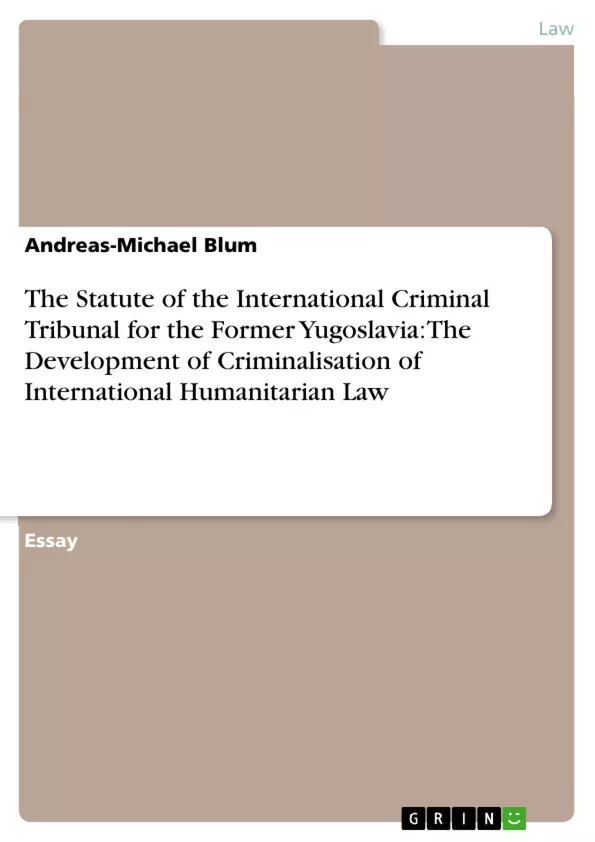This essay describes the scope of offences set forth in Arts. 2-5 of the Yugoslavia Statute and the development of penalisation of international humanitarian law. It further argues that customary international law contains a major part of the modern criminalisation of international humanitarian law.
Inhaltsverzeichnis (Table of Contents)
- Introduction
- I. The Scope of Offences pursuant to Arts. 2 - 5 of the Yugoslavia Statute
- II. Universal Jurisdiction over Violations of Art. 2, 4 and 5 of the Yugoslavia Statute
- III. Conclusions
Zielsetzung und Themenschwerpunkte (Objectives and Key Themes)
This essay aims to examine the development of penalisation of international humanitarian law as outlined in the Statute of the International Criminal Tribunal for the Former Yugoslavia. It focuses specifically on the tribunal's jurisdiction over war crimes.
- The scope of offences defined in Articles 2-5 of the Yugoslavia Statute
- The interplay of customary international law and the Yugoslavia Statute in criminalising international humanitarian law violations
- The importance of the Tadic case in clarifying the scope of the tribunal's jurisdiction
- The criminalisation of grave breaches of the Geneva Conventions and their role in establishing individual criminal responsibility
- The evolution of international humanitarian law from the 1929 to the 1949 Geneva Conventions
Zusammenfassung der Kapitel (Chapter Summaries)
The first chapter delves into the scope of offences defined in Articles 2-5 of the Yugoslavia Statute, examining the criminalisation of "grave breaches" of the Geneva Conventions, violations of "the laws or customs of war," genocide, and crimes against humanity. It argues that customary international law plays a significant role in shaping the framework of international humanitarian law within the scope of the Statute. It also critically assesses some of the penal developments established within the Statute.
Schlüsselwörter (Keywords)
The key focus topics of this work include the criminalisation of international humanitarian law, the Yugoslavia Statute, war crimes, grave breaches of the Geneva Conventions, customary international law, the Tadic case, the International Criminal Tribunal for the Former Yugoslavia, individual criminal responsibility, and the principle of universal jurisdiction.
- Citation du texte
- Dr. Andreas-Michael Blum (Auteur), 1996, The Statute of the International Criminal Tribunal for the Former Yugoslavia: The Development of Criminalisation of International Humanitarian Law, Munich, GRIN Verlag, https://www.grin.com/document/356243



